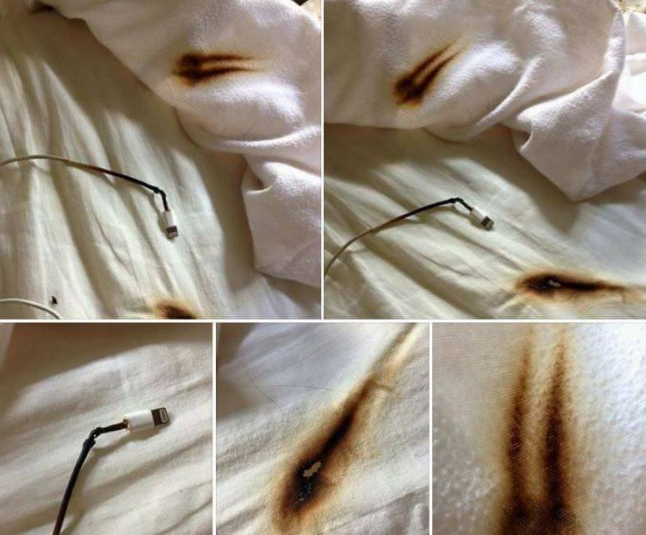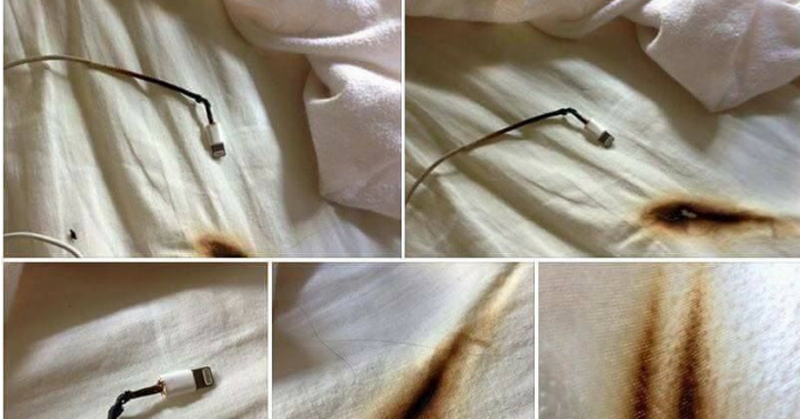In today’s digital age, it’s common to find mobile devices like phones and tablets being charged overnight so they’re fully powered for the day ahead.
However, a seemingly innocent habit has come under scrutiny, as firefighters and safety experts warn about the potential dangers of charging these devices in one specific place: under your pillow or on your bed.
According to a recent post by the Newton New Hampshire Fire Department on Facebook, a whopping 53% of children and teenagers charge their phones or tablets either on their beds or under their pillows. This seemingly harmless act might raise eyebrows, but it’s crucial to understand the hidden risks associated with this seemingly convenient practice.

The main concern stems from the heat generated during the charging process.
When a device is plugged in and actively charging, it generates heat as a natural byproduct. Under normal circumstances, this heat dissipates into the surrounding air without issue. However, when a device is placed on a soft surface like a bed or under a pillow, the heat’s ability to disperse becomes severely compromised.
The Newton NH Fire Department warns this heat buildup can lead to a dangerous situation where the charger itself becomes increasingly hot over time. This excessive heat, combined with the flammable materials of a bed or pillow, creates a perfect storm for potential fire hazards. The outcome is a scenario where the pillow or bed catches fire, putting not only the person charging the device but also everyone else in the household at significant risk.
Please note that these warnings aren’t meant to induce panic but rather to raise awareness about the potential dangers of improper charging practices.
As our reliance on electronic devices continues to grow, we must educate ourselves and our loved ones about safe charging habits to mitigate unnecessary risks.
To solve this potential hazard, be mindful of where you charge your mobile devices. While it might be tempting to leave your phone or tablet charging under your pillow as you sleep, the safety risks far outweigh the convenience. Instead, opt for a solid, flat surface like a nightstand or desk for charging. This allows the heat to dissipate and reduces the chances of a fire hazard.
Parents and guardians have a crucial role to play in educating their children about responsible charging practices. Engage in open conversations about the potential risks associated with charging devices on beds or under pillows. Encourage them to adopt safe habits that not only protect their personal safety but also the safety of the entire household.
Here are some tips on how to safely charge your phone:
1. Use Official Chargers
Always bear in mind that each manufacturer usually uses a charger with different standards, with a different voltage and intensity. If you use a different charger or a generic charger, your charge will not be entirely satisfactory (it will charge little or very slowly. That is why we advise you to prioritise charging with an official charger (or one recommended by the manufacturer) according to your mobile model.
2. Choose a Flat Surface
Opt for a solid, flat surface like a desk, nightstand, or dedicated charging station. This allows heat to dissipate efficiently.
3. Well-Ventilated Area
Charge your device in a well-ventilated area to prevent heat buildup. Avoid placing it in confined spaces.
4. Never use your phone while charging
While you are charging the battery of your mobile you are advised not to use it. It can cause the battery to overheat, as well as damaging it by using it when charging. If possible, your mobile should be at rest while it is being charged.
5. Avoid Charging Overnight
While it might be tempting to leave your device charging overnight, it’s safer to charge it during waking hours when you can keep an eye on it.
6. Remove Flammable Materials
Keep your charging area clear of flammable materials like blankets, pillows, or curtains that could catch fire.
7. Regularly Check Chargers
Periodically inspect your chargers for signs of damage, fraying, or overheating. Replace damaged chargers immediately.
8. Educate Family Members
Teach your children and teenagers about safe charging practices to ensure their safety and the safety of your home.


















